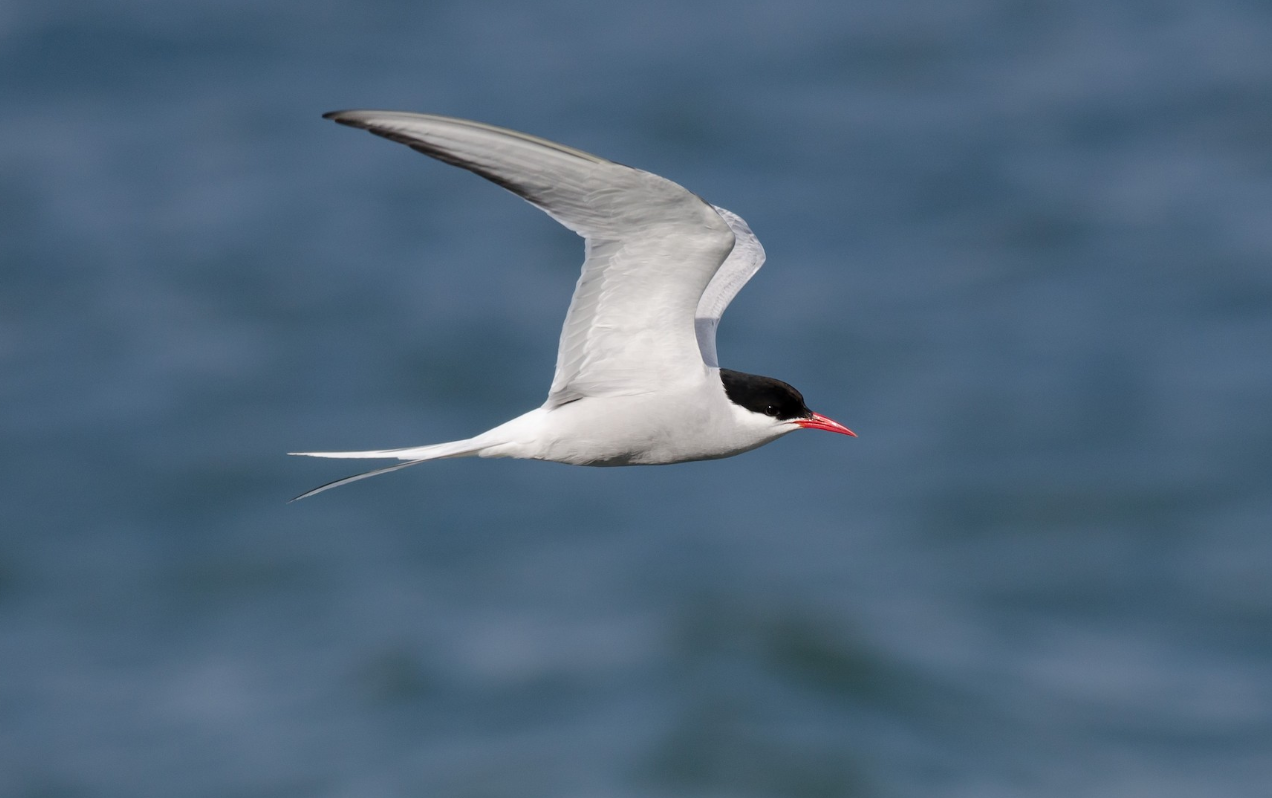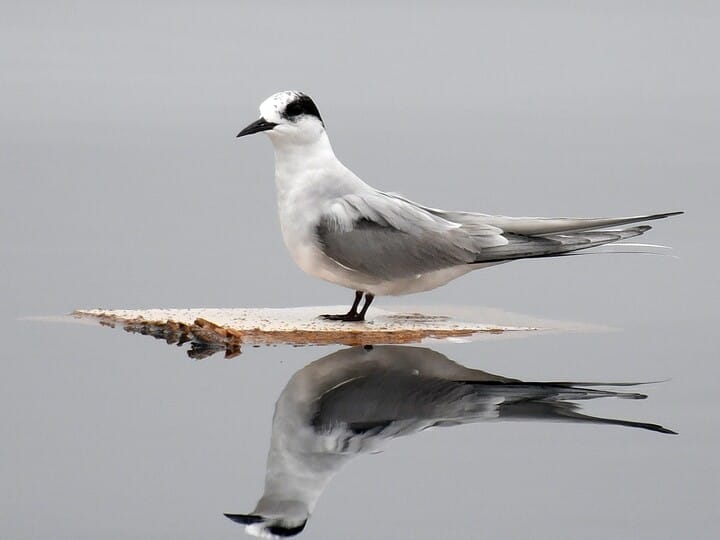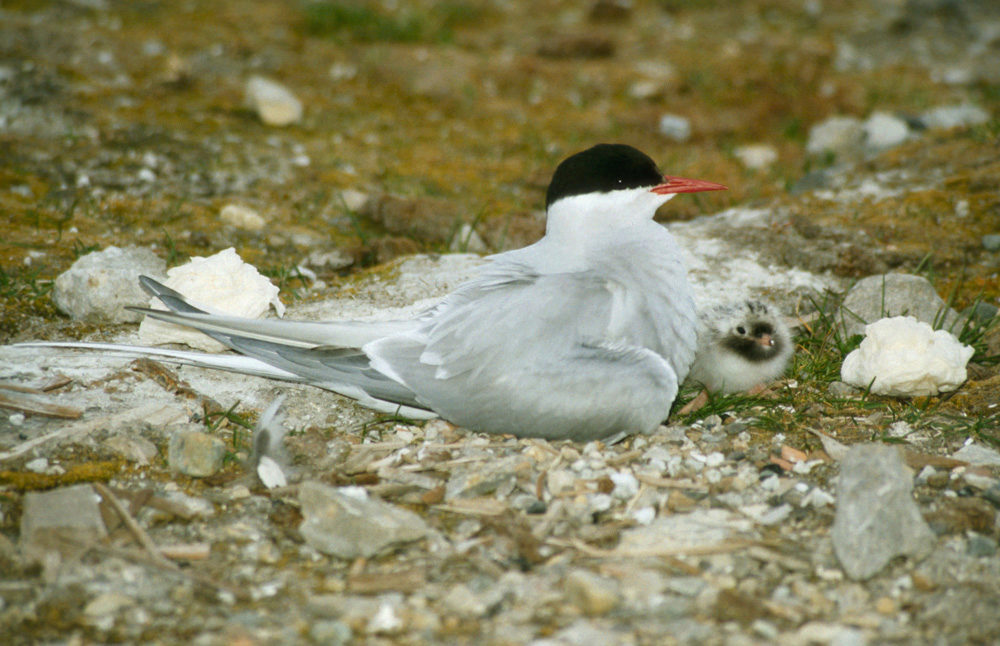Feeding behaviour
Arctic Terns have a unique way of finding food. They fly slowly
upward, pause in the air for a moment, and then swoop down to catch
prey just below the water's surface. Sometimes, they even surprise
other birds by swooping at them, causing them to drop their food,
which the Arctic Terns then steal. These birds rarely rest directly on
the water, but you might spot them perched on floating logs or debris.
Flight and fishing
Arctic Terns are excellent fliers, known for their grace and buoyancy
in the air. They often hover over places where they hunt for food or
where they have nests. They mainly eat small fish, which they either
grab from the water's surface or dive about 50 cm below the surface to
catch. After catching a fish, they rise out of the water, shake
themselves off, and swallow the fish head-first. However, they have to
watch out for other seabirds like gulls that try to steal their catch.
Breeding behaviour
During breeding season, Arctic Terns gather in noisy groups usually
refered to as colonies. Male terns catch the attention of females by
flying low over the colony with fish in their bills, pointing them
downward. Interested females follow the males while flying. The
courting process continues on the ground, with the male tipping his
head down and holding his wings out. He offers food to the female, and
as they bond, he becomes the primary provider of food. Pairs stay
together for the entire breeding season.
Nesting behaviour
Adult Arctic Terns are quite protective of their nest sites. When
other birds come too close, the terns first use a "bent posture,"
tilting their heads down and holding their wings out. If the intruder
doesn't back off, the terns become more aggressive, raising their
bills and spreading their wings. In some cases, they even fight the
intruder, both on the ground and in the air. If humans enter their
breeding colony, Arctic Terns may dive towards them, peck their heads,
and even leave a "message" behind.



